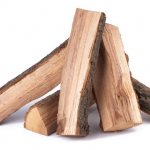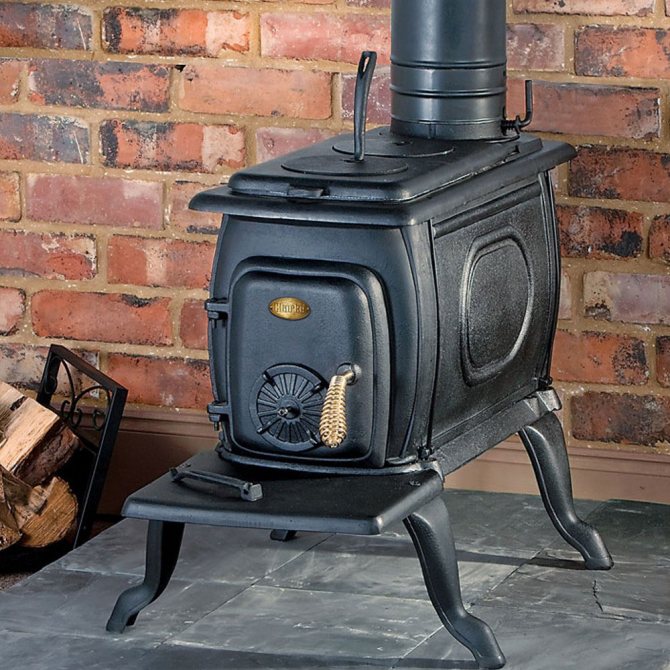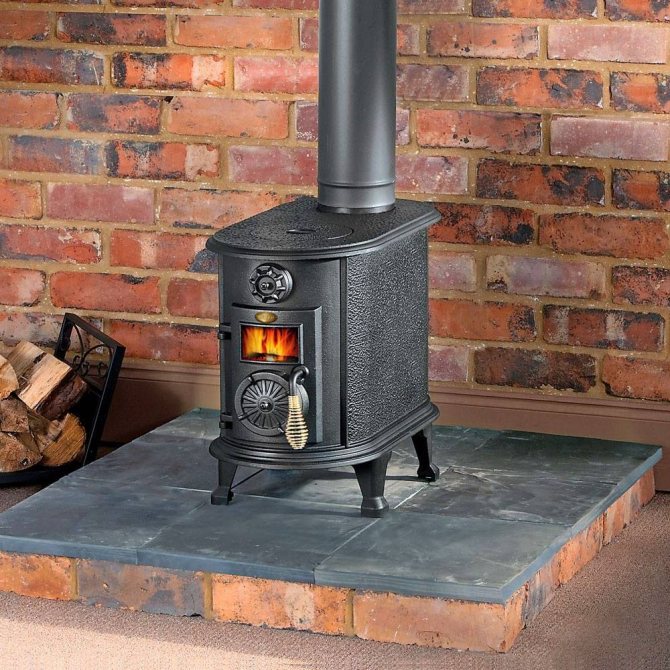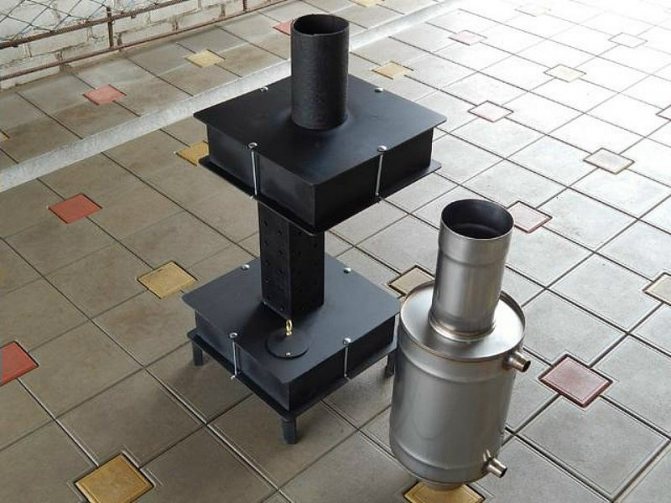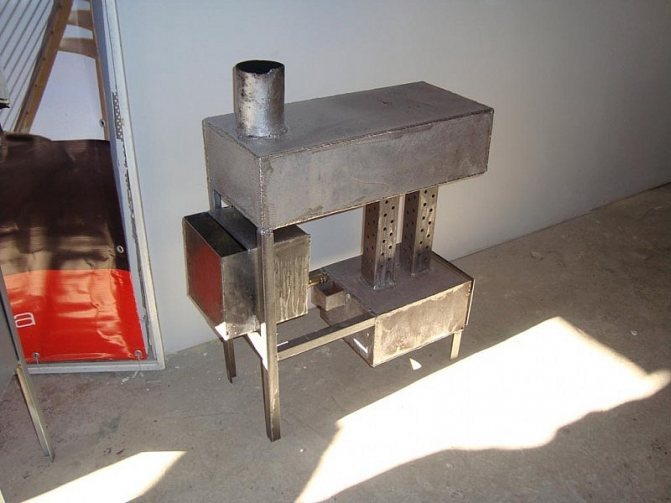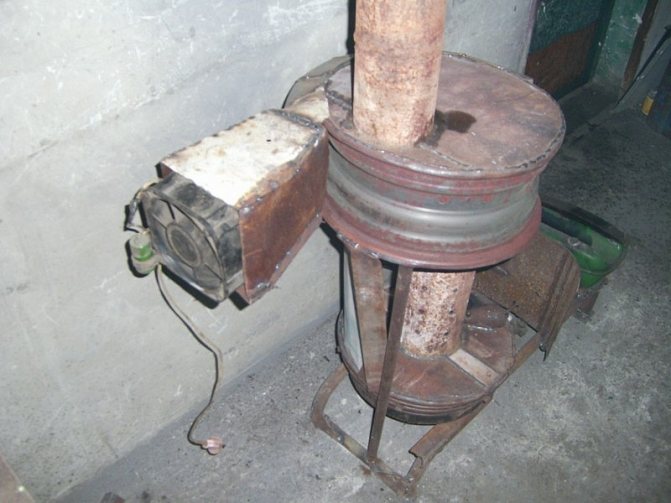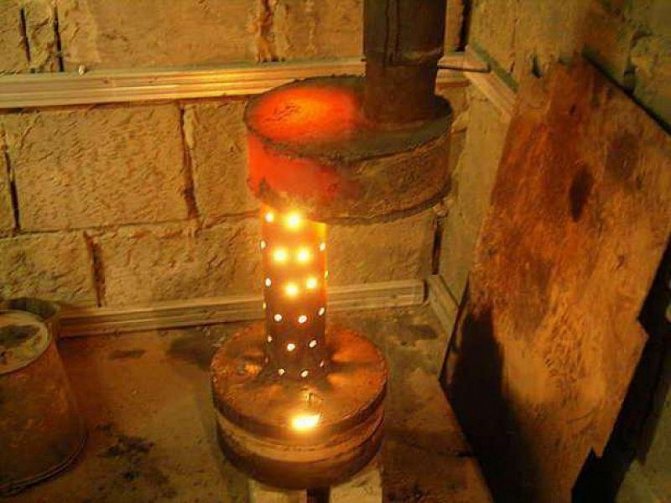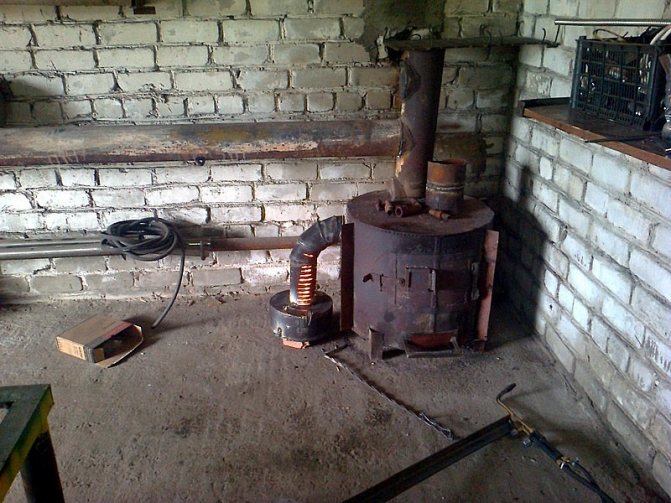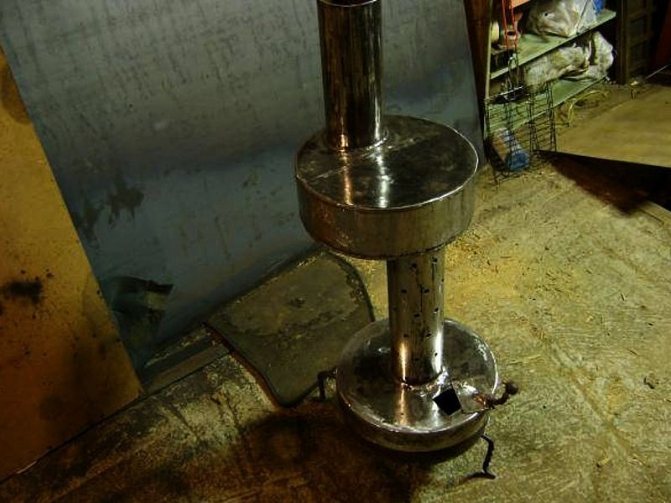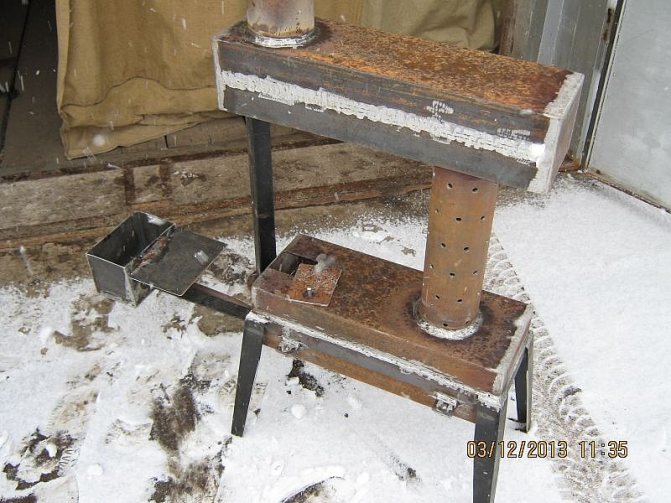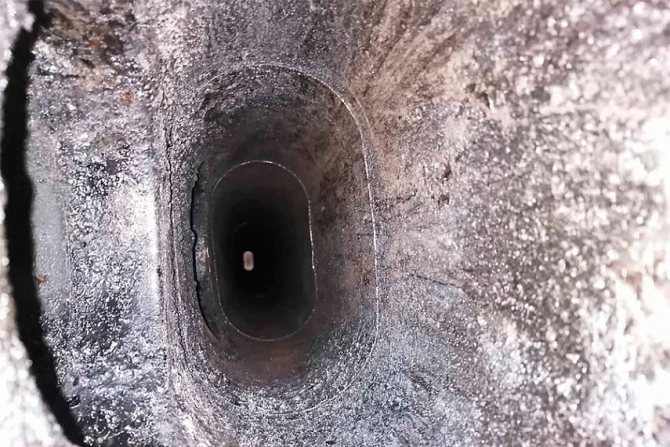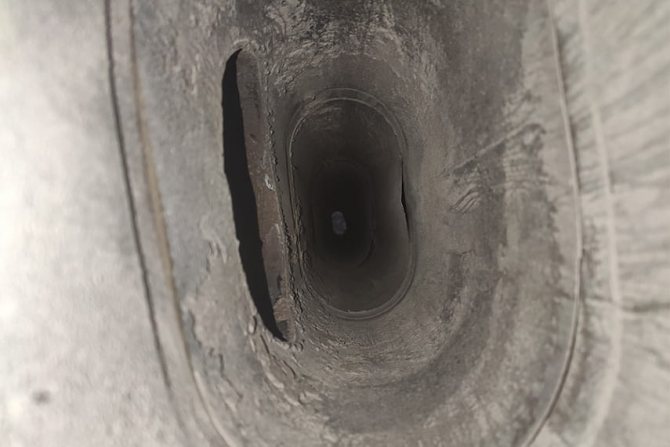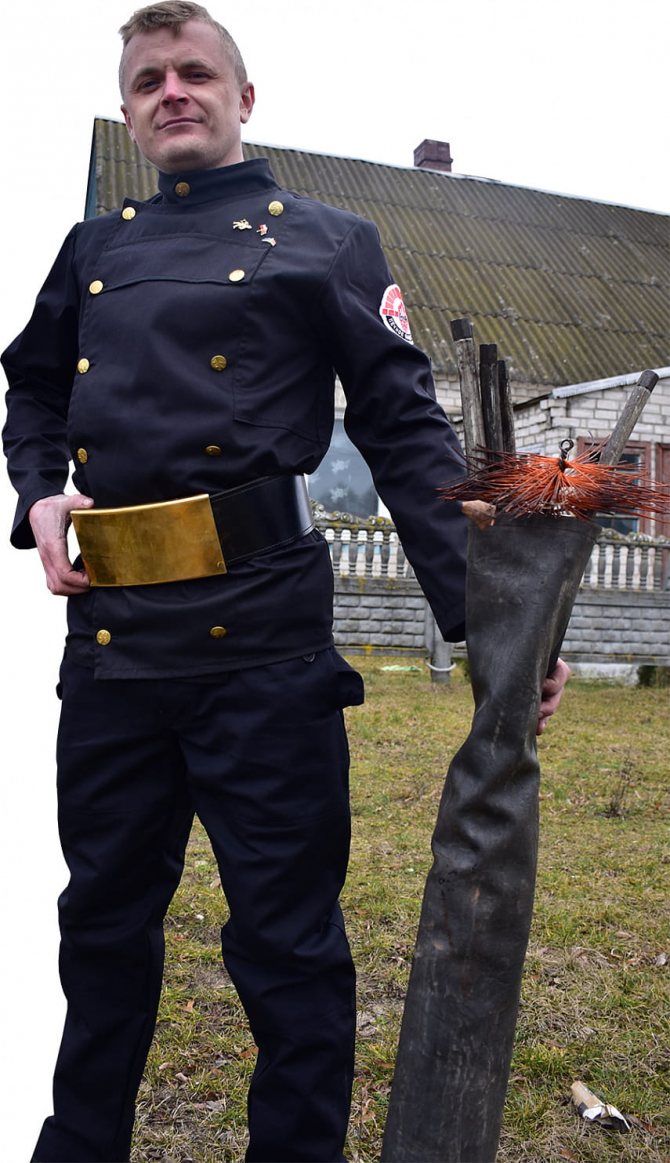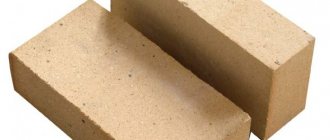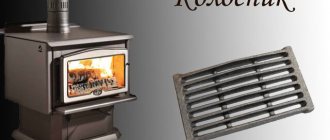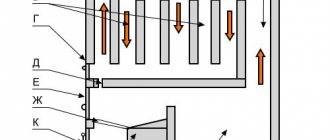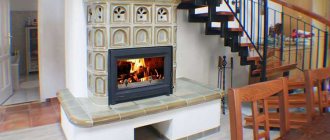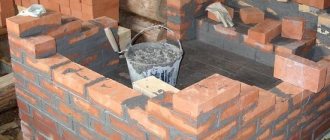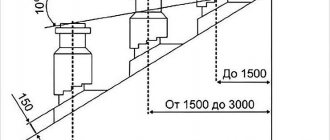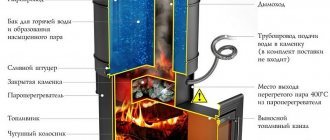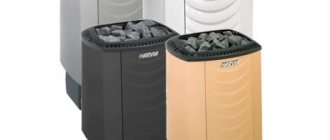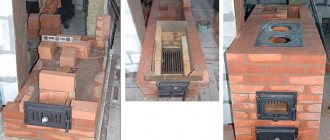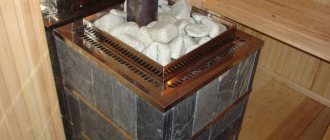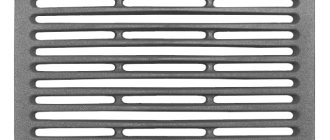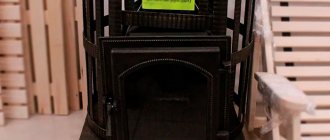What to drown with?
The stove-potbelly stove is efficient, small-sized, unpretentious in operation. Its installation does not cause difficulties, and kindling is a process that does not require special training. Firewood (or dry chips) is used as fuel.
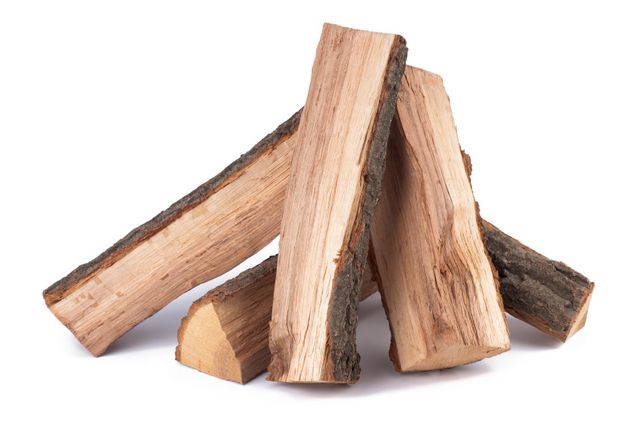
Expert opinion
Pavel Kruglov
Stove operator with 25 years of experience
When using firewood, it is recommended to use logs, the length of which does not exceed half a meter, and the thickness is 8-10 centimeters. This will allow them to burn out efficiently and evenly, avoiding sharp smoldering. You can also take a closer look at wood briquettes, which in their properties are no different from firewood. At the same time, in storage, they are more capricious and, when kept for a long time in conditions of high humidity, they disintegrate into sawdust.
Wood is one of the most demanded fuels. But how to heat a potbelly stove except firewood?
What to use besides firewood?
You can take:
- Peat briquettes, like wood briquettes, do not tolerate direct wetting, but they are less critical to storage conditions. However, when they are burned, a lot of ash is formed. Peat does not like long-term burning, emitting bad smell.

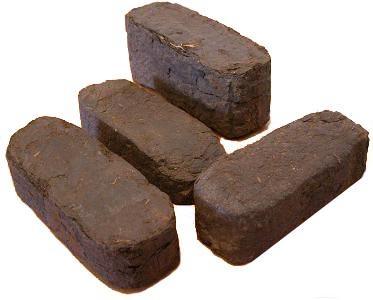
- Coal is no less popular for kindling than firewood. It burns longer, has a higher efficiency. But due to the high combustion temperature of the stove, coal-fired stoves impose special requirements on the design of the chimney.
- Pellets are granules made from compressed waste from the woodworking industry. The economic benefit of such fuel lies in the fact that it is produced from real waste and does not need special processing - cutting, splitting.


What can not be used to heat?
The stove should not be heated with raw fuel, this leads to the fact that during combustion, moisture is converted into steam. Steam, passing through the channels of the furnace, cools them and settles on the walls of the structure. Mixing with soot, the droplets form condensation, which leads to damage to the metal components of the unit and the destruction of the potbelly stove. So, firewood must dry out for at least a year before use.
Coal types
The origin of coal is vegetable. This rock is mainly composed of carbon and non-combustible impurities that form ash during combustion. For coals mined in different regions, the amount of impurities is not the same. Sulfur contained in the rock, upon combustion, forms oxides, which in the atmosphere turn into sulfuric acid. Lingitis is especially rich in sulfur. Coal is divided into several types, depending on its characteristics.
- lingitis (used in power plants because of its looseness and crumble properties, the youngest type of coal);
- brown coal;
- coal;
- anthracite (has the most ancient origin).
Humidity (V) and content of volatile impurities (LP):
- lingitis
- brown coal: B = from 30 to 40%, LP> 50%;
- coal: B = 12 to 16%, LP = 40%;
- anthracite: B = LP = 5-7%.
Specific heat of combustion:
- brown coal - 3-5 thousand kcal / kg;
- coal - 5-5.5 thousand kcal / kg;
- anthracite - 7.4-9 thousand kcal / kg.


Which stoves are intended for kindling with coal
The combustion temperature of coal is higher than the combustion temperature of logs. Therefore, special design furnaces are used to heat coal. Theoretically, ordinary brick stoves can also be fired with coal, but the firebox should have thickened walls, and the grate should be located two rows below. In addition, the structure should have a separate, dedicated coal extraction system that is not linked to other systems.
Sometimes in furnaces, two boilers with water are installed inside the firebox, which serve to heat the room and protect the brickwork from overheating. In such structures, it is necessary to ensure that there is always water in the pipes.
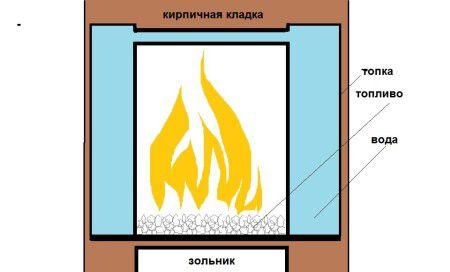

The ash pan and the grate must necessarily correspond to each other in size so that there is no heat loss. To increase the draft, use special nozzles on the stove.
The sauna stove can also be fired with coal if its wall thickness exceeds 35mm, otherwise it may collapse from exposure to high temperatures!
Reasons for the appearance of smoke
- Blockage in the chimney or oven ducts.
- Cracks in the oven masonry. Due to their appearance, the draft and flue gas temperatures are reduced.
- Destruction of the internal masonry of the furnace.
- Strong cooling of the chimney and the entire structure of the furnace.
- A stove can smoke if, in parallel with another stove, it is connected to one chimney without a special divider (smoke damper).
Preparing the stove for kindling
Before stoking the stove, it is worth checking its serviceability and preparing it for kindling. This is especially true in country cottages, where the stove is used infrequently, upon the arrival of the owners.
- We visually inspect the stove for cracks in the masonry. If they are present, smoke, carbon monoxide can enter the room, moreover, when heated, the crack can increase and damage the masonry even more. If cracks are found, they are sealed with a mixture of clay and sand.
- We check for whitewash on the pipe (in the attic and roof).
- It is undesirable to place combustible, especially flammable, objects closer than half a meter from the hot walls of the furnace. Also, do not stack dry firewood close to the stove.
- It is recommended to clean the pipe 2-3 times a month (with constant use).
- Clean the stove before lighting it up. Fill the slag and ash with water and rake it out with a poker, removing it to a specially designated place. The outer walls of the oven are cleaned of dust with a dry cloth. If this is not done, dust will cause an unpleasant odor.
- Do not use pieces of bitumen, household and construction waste, plastic, etc. for kindling.
- Do not open both the blower and the oven door at the same time.
- In order not to overheat the stove, it is heated several times a day, the duration should not exceed two hours.
- Choose dry, medium-sized charcoal for kindling. Before loading into the oven, it is cleaned of dust. If the fuel is wet, then when heated, the moisture becomes vapor, which turns into condensate that settles on the pipe walls, mixes with soot and cools the structure.
- Flammable liquids (kerosene, gasoline and others) must not be used for ignition.
- It is forbidden to leave the stove unattended during kindling, especially if there are children and animals in the house.
How to maintain a constant temperature?
When the wood or coal burns out, the heat transfer rates of the stove are significantly reduced, and after a while the structure cools down altogether. To reduce fuel consumption and maintain a given temperature, experienced stove-makers advise using the following methods:
- next to the stove (no closer than 5-6 cm), place side metal screens in order to additionally heat the room due to the circulation of warm air;

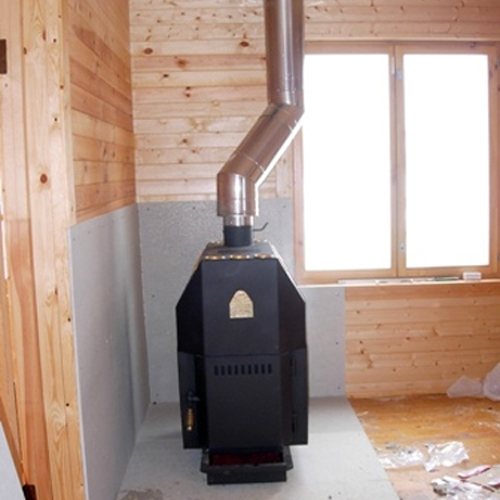
Protective screens - it will be possible to keep the heat in a metal casing for much longer;
- to reduce air circulation, it is important to stack the logs in the oven as tightly as possible. If coal is used as fuel, the ash should be agitated as rarely as possible;
- placing a metal box or a bucket of sand on top, even after extinction, the accumulated heat will be evenly distributed throughout the room;


Pour sand into a bucket or box and place on top of the stove - to preserve heat, you can overlay the potbelly stove with bricks (in 1-2 layers), but not tightly, but at a distance of 5-7 cm, leaving gaps for ventilation.
Stove type stove design
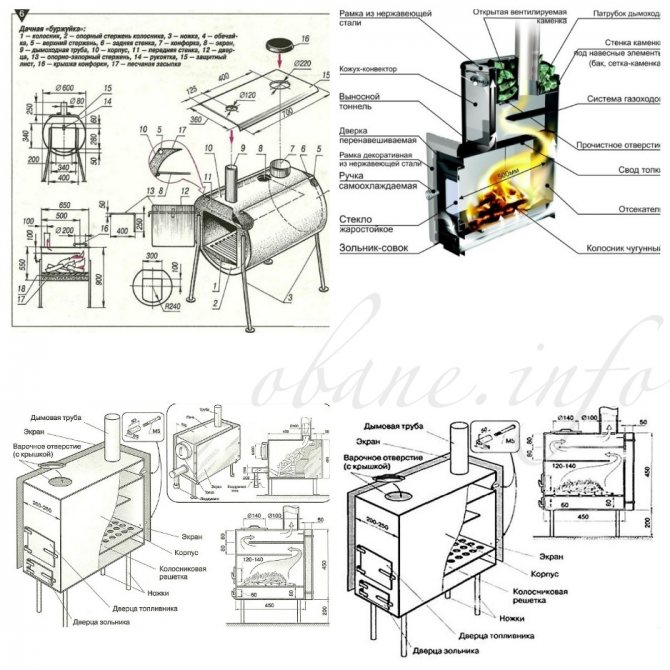

In essence, a classic stove of this type has the following design features:
- Compact metal casing with a dead hearth or grate and with a side chimney.The upper plane of the cabinet can be used as a primitive hob;
- The chimney, in the overwhelming majority of cases, looks like a metal pipe. A very important feature. The diameter of the pipe directly depends on the internal volume of the furnace. Correctly selected chimney cross-section does not allow flue gases to immediately escape into the atmosphere, they are propped up under the roof of the firebox and directed into internal convection, making several revolutions in the volume of the firebox, at the same time taking outside air with them through the door, ensuring more complete combustion of the fuel. They go into the chimney already cooled down significantly and having lost their original temperature;
Important! Practical heating technology shows that for the efficient operation of this type of furnace, their chimney diameter in mm. must be 270% more than the internal volume of the firebox in liters. That is, an elementary calculation formula is obtained by multiplying the volume of the furnace in liters by a factor of 2.7.
- Tying the body of the firebox with screens. The screens are made of a metal sheet with a thickness of 2 - 3 mm and are mounted on the body of the stove with a gap of about 50 - 70 mm. Screens cover about 45 - 55% of the stove surface, no more and no less. This makes it possible to effectively reflect the thermal energy emitted by the metal surfaces of the furnace back and provide the required temperature regime in its furnace. The sides and rear of the stove are covered with screens;
- Furnace podium. Although the word podium is quite loud, it nevertheless reflects the main requirement - ensuring fire safety. Since the lower part also emits heat energy, a cut-off must be arranged under the oven, which consists of a metal sheet, 3 mm thick, laid on basalt or kaolin cardboard. For efficient heat distribution, the refractory substrate must extend beyond the linear perimeter of the furnace at a distance of at least 370 mm. The optimal output is considered to be 550 mm.
Coal as a fossil fuel


Coal is a type of fossil fuel. The process of its formation takes place from ancient plants deep underground without oxygen access, for quite a long time. Coal is primarily carbon containing non-combustible impurities. Coal is generally classified as follows:
- Lignite is the lowest-aged type of coal; it has a brown color, up to 45% moisture content, high sulfur content, and is the most loose in relation to other types of coal. It is mainly used in power plants.
- Brown coal is also a fairly young solid fossil. Carbon content up to 70%, humidity about 40%, volatiles 38-50%. It is used as a local fuel, sometimes as a chemical raw material.
- Coal is a sedimentary rock formed by the decomposition of plant debris. Here the composition is more saturated with carbon (from 75% to 95%) and contains less water (8-20%) and impurities that form ash.
- Anthracite - coal of the most ancient origin, has a high density and luster. The carbon content is 95%. Solid fuel from such coal is poorly flammable, having the highest degree of combustion heat.
How long can you heat continuously?
Several factors affect the duration of the furnace:
- the ability to retain heat at home;
- what type of fuel is used;
- if heating is carried out, then what kind;
- and finally the owner himself, and his preferences for indoor temperature.
If the winter is not very cold, then the house is 6x6 in size, it is enough to heat it once a day, while the temperature indicators will be within 20 ° C. For example, having flooded the stove in the morning, it will be hot in the house (about 24 ° C), then by the next in the morning it will drop to about 18 o C.
How long can you heat continuously?
Several factors affect the duration of the furnace:
- the ability to retain heat at home;
- what type of fuel is used;
- if heating is carried out, then what kind;
- and finally the owner himself, and his preferences for indoor temperature.
If the winter is not very cold, then the house is 6x6 in size, it is enough to heat it once a day, while the temperature indicators will be within 20 ° C. For example, having flooded the stove in the morning, it will be hot in the house (about 24 ° C), then by the next in the morning it will drop to about 18 o C.
